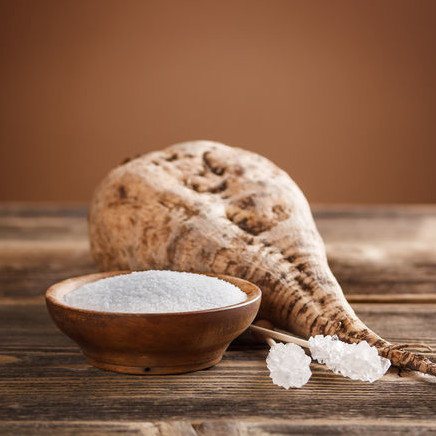The debate on beet sugar vs cane sugar often focuses on refining techniques and composition.
The debate on beet sugar vs cane sugar often focuses on refining techniques and composition.
Blog Article
Checking Out the Distinctions being used and Benefits In Between Beet Sugar Vs Cane Sugar
In the culinary world, the option between beet sugar and cane sugar is not just about sweet taste but involves a nuanced factor to consider of taste, application, and effect. While both sugars stem from various plants, each undergoes one-of-a-kind manufacturing processes that discreetly affect their features and viability for different recipes. As cooks and customers increasingly focus on both the environmental and taste profiles of their active ingredients, recognizing these distinctions ends up being essential. This exploration supplies insight into how each sugar kind can best enhance culinary productions.
Origins and Manufacturing Processes of Beet and Cane Sugar

Walking cane sugar, on the various other hand, originates from the sugarcane plant, an exotic grass belonging to Southeast Asia today cultivated in exotic areas worldwide. The manufacturing of cane sugar starts with the harvesting of cane stalks, which are crushed to release the juice. This juice is then steamed to concentrate it, after which it is spun in centrifuges to create raw sugar crystals. These crystals are more improved to generate the white sugar frequently available in shops.

Nutritional Content and Health And Wellness Considerations

When contrasting the dietary content of beet sugar and cane sugar, it comes to be evident that both types basically give the exact same caloric values, with around 16 calories per teaspoon and no substantial nutrient diversity. Each is made up nearly entirely of sucrose, which is a straightforward carbohydrate that uses quick energy yet does not have vitamins, minerals, or fiber. This similarity encompasses their impact on health, particularly worrying blood glucose degrees. Both sugars, when consumed over, can contribute to elevated blood sugar degrees, a threat variable for diabetes and various other metabolic disorders. Excessive consumption can lead to weight gain and oral issues, as both sugars are equally cariogenic, advertising tooth degeneration. From a health point of view, moderating consumption of any kind of sort of sugar, whether from beet or cane, is suggested to prevent these potential unfavorable effects on health. Hence, neither holds an unique advantage over the other in terms of health and wellness benefits.
Taste Profiles and Culinary Applications
Regardless of their similar chemical frameworks, beet sugar and cane sugar vary subtly in taste, which can basics influence their use in numerous culinary contexts. Walking cane sugar often carries a tip of molasses, also in its polished form, lending a cozy, caramel-like touch that boosts baked goods, coffee, and chocolate-based recipes. On the other hand, beet sugar is defined by its highly refined, neutral preference, making it a versatile sweetener that does not change the taste accounts of recipes.
Environmental Effect and Sustainability
While both beet and cane sugars are stemmed from plants, their ecological impacts vary dramatically due to the distinct techniques of farming and handling needed for every. Sugar beet growing usually entails extensive mechanization, which can enhance fossil fuel consumption and carbon exhausts. Beets can be grown in cooler climates and require much less irrigation, possibly reducing water use compared to sugarcane. Sugarcane, on the other hand, is generally grown in tropical areas where it depends greatly on irrigation and a much longer growing period, enhancing its water impact.
Additionally, the processing of sugarcane typically generates a substantial quantity of waste, including bagasse, which, although useful as biofuel, often adds to air pollution if shed inefficiently. Sugar beet handling utilizes more of the pop over here raw products, leading to much less waste. Both industries deal with obstacles in minimizing their environmental impacts, however recurring innovations in agricultural techniques and waste administration are aiming to improve sustainability.
Economic Aspects Affecting the Sugar Industry
The economic characteristics of the sugar industry are significantly influenced by international market demands and trade plans. Factors such as tolls, subsidies, and international profession contracts play crucial duties fit the competitive landscape. As an example, in areas where sugarcane or sugar beet manufacturing is subsidized, manufacturers might have a financial benefit that allows them to offer reduced prices on the international market. This can produce differences in productivity and market gain access to for manufacturers in countries without such aids.
Additionally, changes click to read more in worldwide need for sugar, affected by nutritional trends and commercial usage in foodstuff, straight influence rates and manufacturing degrees. beet sugar vs cane sugar. Weather additionally play a crucial duty, as they can considerably impact crop yields and, as a result, the supply chain. This variability introduces a degree of economic uncertainty that can lead to financial investment volatility in sugar manufacturing markets, affecting decisions from growing to market method
Final Thought
In verdict, both beet and cane sugar have distinct high qualities that match various cooking demands. While cane sugar conveys an abundant taste perfect for boosting baked items, beet sugar's nonpartisanship is excellent for lighter dishes. Nutritional similarities regardless of, their distinctive production procedures and environmental impacts add intricacy to the option between them. Thus, comprehending these differences assists cooks and consumers make informed choices that line up with their wellness, cooking, and moral choices.
Report this page